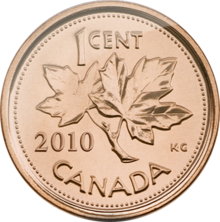Today’s Google doodle pays tribute to an important milestone in both Canadian culture and in the worldwide financial sector – the extinction of the Canadian penny.
As of today, the little copper coins, worth one cent, will no longer be distributed. A quick social media search shows that Canadians have mixed reactions to this.
For some, the penny represented something of sentimental value, whether it’s the “lucky penny” superstition, or the the coin that could make your wishes come true by throwing them into a wishing well. But for many, the penny was simply an unnecessary burden; its dismissal paves the way to lighter wallets and less time spent rolling coins.
The Canadian penny is being retired because production cost exceeded its monetary value. It costs 1.6 cents to make each one-cent coin. The Canadian Government estimates that by ceasing the production of the penny, they would save $1.1 million per year.
What can the demise of the penny teach us about product management?
In an era where customer demands are constantly shifting, companies are always trying to find out what they can do to stay on top of the market and enhance their products so that they align with their customers’ needs.
But sometimes, trying to enhance or revive a weak product can be costly. It may also require more marketing efforts and additional resources, which drives the product costs up even more. Sometimes, in order to keep customers satisfied, companies must consider developing new products, but at the same time, eliminating the ones that aren’t doing well.
Keep your golden products alive by tossing poor ones into the well
Product elimination used to be looked down upon. However, these days, it is no longer considered as a negative aspect of product management. Rather, it is viewed as a positive and valuable product management tool that can strengthen customer relationships.
Eliminating products can be tricky. Businesses that go that route are faced with the challenge of choosing the right strategy and cut products without losing customers.
According to a study by David R Harness of the Huddersfield University Business School and Dr. Tina Harness of Leeds Business Schoolstudy, “the UK retail financial service sector provides evidence that product elimination can be used as a relationship marketing tool by allowing products to be eliminated without creating discontinuities.”
Conserve customers like those collectible pennies
In order to keep customers from turning to other suppliers, the product elimination process must be backed up by customer retention and relationship marketing strategies. Remember, products are cut in order to keep up with the changing customer demands. In order to retain customers, companies must ensure their customers understand that the product they are currently using will be replaced by an even better one.
Penny for your thoughts on this? Or should I say, Nickel for your thoughts?
Related blog posts:
What Facebook’s Social Graph Means for Product Development
Customer Lifecycle Value: Increasing customer retention
